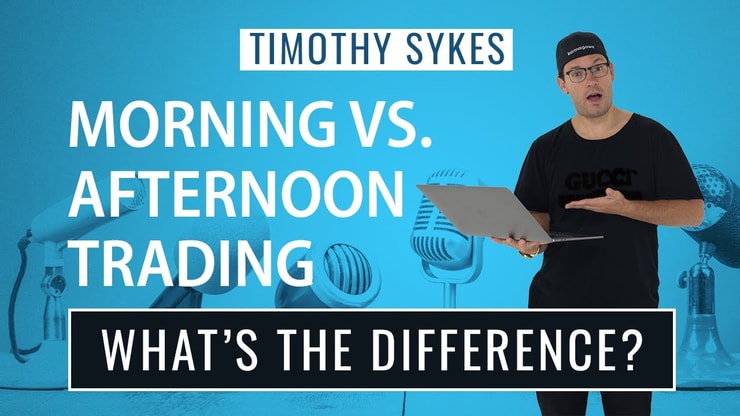Timing in the stock market is pivotal, not just for day traders but for any investor looking to capitalize on trading opportunities. Understanding when to engage and when to hold back can significantly influence the profitability of your investment portfolio. Whether reacting to market news, leveraging trading analysis, or navigating through economic indicators, the timing of your moves can mean the difference between substantial gains and notable losses.
I’ll cover all of the following:
- Market Volatility: Often increases during market openings and news releases.
- Economic Indicators: Significant announcements can cause substantial price movements.
- Seasonal Trends: Certain times of the year show statistically better performance.
- Trading Sessions: Each part of the trading day has its unique characteristics and opportunities.
Table of Contents
- 1 How Does the Stock Market Work?
- 2 The Best Time of Day to Buy Stocks
- 3 The Best Day of the Week to Buy Stocks
- 4 The Best Time of the Month to Buy Stocks
- 5 The Best Time of the Year to Buy Stocks
- 6 Key Takeaways
- 7 Frequently Asked Questions
- 7.1 Should I Buy Stocks at Night?
- 7.2 What Are the Worst Months for the Stock Market?
- 7.3 Can You Buy Stocks on Weekends?
- 7.4 How Does Trading Timing Impact Short-Term Investment Returns?
- 7.5 What Investment Strategies Best Suit Long-Term Stock Investing?
- 7.6 How Can Day Traders Utilize Trading Action and Market Movements?
- 7.7 What Are the Key Considerations for Portfolio Management in Stock Trading?
- 7.8 How Can Investors Use Financial Analysis to Predict Stock Company Performance?
- 7.9 What Role Does the Financial Community Play in Shaping Investment Strategies?
- 7.10 How Can Day Traders Maximize Profits From Trading Shares?
- 7.11 What Should Investors Consider When Evaluating Dividend Stocks for Long-Term Trading?
- 7.12 How Do Investment Opportunities Differ Between Trading Short-Term and Long-Term?
- 7.13 What Are Key Differences Between Day Trading and Trading Long-Term?
How Does the Stock Market Work?

2025 Millionaire Media, LLCThe stock market serves as a complex network where individuals and institutions buy and sell shares of publicly listed companies, aiming to achieve profits through strategic trading moves. At its core, it’s about capital exchange — investors purchase stocks they believe will increase in value, while sellers part with shares they think will decline.
The process of trading stocks involves several steps:
- Choosing a Stock: Investors select stocks based on analysis, trends, and market predictions.
- Placing an Order: Through a trading platform, an order is placed to buy or sell shares.
- Order Execution: Trading orders are matched in the market—buy orders with sell orders of the same stock and price.
- Completing the Transaction: Once matched, the trade is executed, and shares are exchanged.
Navigating the stock market efficiently often involves utilizing modern technology and trading platforms, especially for those trading on the go. One innovative approach is trading stocks directly from your smartphone, which can offer unprecedented flexibility and real-time market access. This method is particularly useful for reacting quickly to market changes during trading hours. For a guide on how to leverage this technology effectively, see how you can buy stocks on your iPhone.
Market Sessions Explained
Understanding different market sessions is crucial for trading as each session can present unique trading challenges and opportunities. The rhythm of the market shifts throughout the day, influencing the strategic timing of trading decisions.
- Pre-Market: Trading that occurs before the official market opening, often reacting to overnight news.
- Open Market: The official start of the trading day, marked by increased volatility and volume.
- Afternoon Hours: Typically less volatile, offering a more stable environment for analysis-driven trading.
- Closing Session: The end of the trading day can see a surge in activity as traders close positions.
Trading throughout different market sessions requires a solid grasp of various analysis techniques, with candlestick patterns being among the most effective for predicting short-term price movements. These patterns can offer crucial signals during the open, midday, and close of the market, aiding traders in making more informed decisions. To enhance your trading strategy with these patterns, particularly if you’re active during the highly volatile opening and closing sessions, explore this comprehensive candlestick cheat sheet.
The Best Time of Day to Buy Stocks

2025 Millionaire Media, LLCThe time of day can significantly impact stock purchasing decisions, with market dynamics shifting during different trading hours. Understanding these patterns can help in planning optimal entry and exit strategies.
- Early Morning: Right after the market opens, often sees spikes in volatility and trading volume.
- Mid-Morning: After the initial rush, the market tends to stabilize, allowing for clearer analysis.
- Early Afternoon: Typically quieter, providing steady trading conditions.
- Late Afternoon: Volatility can increase again as traders adjust positions before the market closes.
Pre-Market Trading
Pre-market trading allows investors to react to news and events that occur outside of normal trading hours, offering a head start in responding to market changes. However, this comes with its own set of challenges.
- Advantages: Opportunity to capitalize on overnight news before most traders.
- Disadvantages: Less liquidity, higher volatility, and increased risk of price gaps.
More Breaking News
The Stock Market Open
The opening of the stock market is known for its high energy and potential for rapid gains due to initial trading activity. Navigating this time requires a keen understanding of market dynamics.
- Be Prepared: Review pre-market movements and plan entry and exit points carefully.
- Expect Volatility: Initial trades can cause significant price swings.
- Capitalize on Movements: Rapid adjustments in stock prices can create profitable opportunities.
The opening bell of the stock market brings significant opportunities, particularly when major corporate events influence stock prices. A prime example of such an event is a stock split, which can drastically increase trading volume and volatility. For investors interested in such scenarios, understanding the implications of Tesla’s recent stock split will provide critical insights into how these events can affect stock prices and market behavior. Read more about the Tesla stock split and its implications for traders.
Afternoon Hours
The afternoon trading session often offers a more measured pace than the chaotic market open, making it ideal for strategic moves based on thorough market analysis.
Strategies for the afternoon session include:
- Monitor for Breakouts: Stocks may break from morning trends as more data becomes available.
- Prepare for the Close: Anticipate closing rushes or unwinding of positions.
- Adjust Strategies: As news and events unfold throughout the day, be ready to pivot.
The Market Closing Session
The market’s closing session can be crucial for setting up positions for the next trading day. This period often experiences a spike in trading volumes as institutional investors adjust their portfolios.
- Closing Rush: A flurry of activity as traders and institutions make their final moves.
- Positioning for Overnight: Setting up for news that might affect the next day’s market.
- Strategic Moves: Utilizing end-of-day data to make informed decisions for upcoming sessions.
The Best Day of the Week to Buy Stocks

Understanding weekly trends in the stock market is crucial for optimizing trading strategies. Typically, the stock market experiences patterns that can influence the best days to engage in stock trading. For instance, Mondays are often volatile due to the accumulation of news over the weekend, which can impact stock prices. Drawing from years of trading experience, I’ve noticed that these patterns can be leveraged to enhance the timing of trades, potentially increasing trading profits.
- Monday: Often sees post-weekend adjustments; can be good for buyers looking for dips.
- Tuesday: Generally stable and productive, usually the best day to buy stocks.
- Wednesday: Midweek trades continue the trends set on Tuesday, still a strong choice.
- Thursday: Volatility begins to increase as traders prepare for the weekend.
- Friday: Typically the worst day to buy due to closing positions and reduced activity.
The Best Time of the Month to Buy Stocks
Monthly patterns in the stock market also play a significant role in determining the best times to buy stocks. Such trends often reflect broader economic indicators and market events that can lead to predictable movements in stock prices. Investors who understand these patterns can align their investment strategies to capitalize on monthly cyclical opportunities, enhancing their investment returns.
- Beginning of the Month: Fresh capital often enters the market, pushing prices up.
- Mid-Month: Lesser activity, but often more stable prices provide buying opportunities.
- End of the Month: Window dressing by fund managers can inflate stock prices temporarily.
The Best Time of the Year to Buy Stocks
Seasonal trends significantly affect stock prices, with certain times of the year offering better buying opportunities based on historical data and trading patterns. These trends can inform a trading strategy that aligns with periods of high profitability and reduced trading risk.
- January: The “January Effect” can offer lucrative buying opportunities, especially for small-cap stocks.
- April: Often strong due to positive earnings reports and increased investor confidence.
- October: Despite its reputation for volatility, dips this month can provide valuable entry points.
- December: Tax-loss harvesting by investors creates buying opportunities at lower prices.
When Is the Worst Time to Buy Stocks?
Timing is everything, and knowing when not to buy is as important as knowing when to engage. Common pitfalls in timing can significantly impact the financial wealth of investors, leading to unnecessary risk exposure and potential losses.
- Immediately Before Earnings Announcements: High volatility can lead to losses.
- During Merger Announcements: Prices can be inflated based on speculation.
- When Market Indicators Show Overvaluation: Elevated risk of a market correction.
- During High Volatility Without Clear Cause: Unpredictable movements can result in poor entry points.
Key Takeaways

2025 Millionaire Media, LLC- Leverage Market Timing: Using insights from daily, monthly, and seasonal trends to inform buying decisions enhances potential returns.
- Avoid Common Pitfalls: Being aware of times that typically present increased trading risk helps in managing your investment portfolio effectively.
- Utilize Historical Data: Aligning trades with historically profitable times can optimize entry and exit strategies.
- Stay Informed: Continuous research and staying updated on market information and stock news are crucial for timely and effective trading decisions.
Trading isn’t rocket science. It’s a skill you build and work on like any other. Trading has changed my life, and I think this way of life should be open to more people…
I’ve built my Trading Challenge to pass on the things I had to learn for myself. It’s the kind of community that I wish I had when I was starting out.
We don’t accept everyone. If you’re up for the challenge — I want to hear from you.
Apply to the Trading Challenge here.
Trading is a battlefield. The more knowledge you have, the better prepared you’ll be.
What time of day do you buy stocks? Let me know in the comments!
Frequently Asked Questions
Should I Buy Stocks at Night?
Buying stocks outside of regular trading hours can be feasible through platforms offering after-hours trading, but it comes with increased trading volatility and potentially higher trading risks. This option requires careful consideration of market information and trading indicators to make informed decisions.
What Are the Worst Months for the Stock Market?
Historically, September has often been challenging for the stock market due to seasonal investment shifts and psychological factors affecting trader behavior. Understanding these trends through investment analysis can help in risk management.
Can You Buy Stocks on Weekends?
While weekend trading is not available on traditional stock exchanges, some electronic trading platforms may offer it. However, the lack of liquidity during these times can lead to price volatility and may not suit all investment strategies.
How Does Trading Timing Impact Short-Term Investment Returns?
Understanding trading timing is crucial for maximizing returns on short-term investments. Effective use of trading tools and features can help identify the optimal moments to buy and sell, significantly affecting profitability due to price volatility.
What Investment Strategies Best Suit Long-Term Stock Investing?
For long-term stock investing, a robust investment strategy should focus on comprehensive financial analysis and market investment trends. This approach helps in identifying stocks with strong dividend returns and profit potential, ensuring sustained growth.
How Can Day Traders Utilize Trading Action and Market Movements?
Day traders rely heavily on quick, informed decisions made by observing trading action and immediate stock price movements. Utilizing advanced trading features and tools allows them to capitalize on short-term investment opportunities and shares volatility.
What Are the Key Considerations for Portfolio Management in Stock Trading?
Effective portfolio management in stock trading involves balancing a mix of short-term and long-term investments, using financial investment strategies that cater to trading dividends and overall trading portfolio diversification. This strategy helps mitigate investment risks while aiming for consistent trading returns.
How Can Investors Use Financial Analysis to Predict Stock Company Performance?
Investors can use financial analysis to scrutinize stock company information and business metrics, assessing the company’s underlying value and stock returns potential. This analysis is crucial for identifying investment opportunities and managing investment risks.
What Role Does the Financial Community Play in Shaping Investment Strategies?
The financial community provides a wealth of knowledge and insights, often influencing investment strategies through shared analyses, trading trends, and collective experiences. Engaging with community discussions can lead to better opportunity identification and investment decisions.
Day traders can maximize profits by closely monitoring shares price movements and utilizing real-time stock information to make quick decisions. It’s essential to leverage trading research to identify lucrative trading opportunities and execute short-term trades effectively.
What Should Investors Consider When Evaluating Dividend Stocks for Long-Term Trading?
Investors should evaluate dividend stocks by analyzing the stability of the stock business and the consistency of dividend returns over time. Long-term trading success in dividend stocks hinges on understanding broader market trends and the specific financial health of the company.
How Do Investment Opportunities Differ Between Trading Short-Term and Long-Term?
Short-term trading focuses on capitalizing on rapid shares movement and immediate trading opportunities, whereas long-term investment strategies typically rely on accumulating wealth gradually through sustained stock performance. Both strategies require diligent trading research and a comprehensive understanding of stock information to identify the most promising investment opportunities.
What Are Key Differences Between Day Trading and Trading Long-Term?
Day trading exploits a short-term trading opportunity by rapidly buying and selling stocks within the same day, while a long-term investment opportunity involves holding assets to benefit from gradual appreciation and compounding interests. Both strategies require different sets of skills and perspectives on market dynamics to effectively capitalize on the unique opportunities they present.











Leave a reply